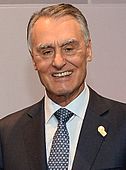Portuguese legislative election, 1987
|
|
|||||||||||||||||||||||||||||||||||||
|---|---|---|---|---|---|---|---|---|---|---|---|---|---|---|---|---|---|---|---|---|---|---|---|---|---|---|---|---|---|---|---|---|---|---|---|---|---|
|
|||||||||||||||||||||||||||||||||||||
|
250 seats to the Portuguese Assembly 125 seats needed for a majority |
|||||||||||||||||||||||||||||||||||||
|
|||||||||||||||||||||||||||||||||||||
|
|||||||||||||||||||||||||||||||||||||
| Portugal |
 This article is part of the series: |
This article is part of the series:
Politics and government of
Portugal
The Portuguese legislative election of 1987 took place on 19 July. In the previous election, in 1985, the Social Democratic Party had won a minority government managing to survive in coalition with the Democratic and Social Center and the Democratic Renewal Party, and after the approval of a no-confidence motion from the left-wing parties, with the aid of the Democratic Renewal Party, the government fell and Mário Soares, the President at the time, called for a new election.
The PSD was very popular going into the election, and was elected to a landslide majority government—the biggest that a Portuguese party had ever won in a free election. The left-wing Democratic Unity Coalition lost some of its MPs to the Socialist Party and the Democratic Renovator Party lost almost all of its influence, mainly due to its responsibility in the fall of the former government. The right-wing Democratic and Social Center lost almost half of its vote share, due to the effect of tactical voting for the also right-wing, Social Democratic Party. European elections were held on the same day.
The major parties involved and the respective leaders:
Aníbal Cavaco Silva, leader of the Social Democratic Party, was nominated Prime Minister.
The following table shows the opinion polls of voting intention of the Portuguese voters before the election. Those parties that are listed are currently represented in parliament. Included is also the result of the Portuguese general elections in 1985 and 1987 for reference.
...
Wikipedia


